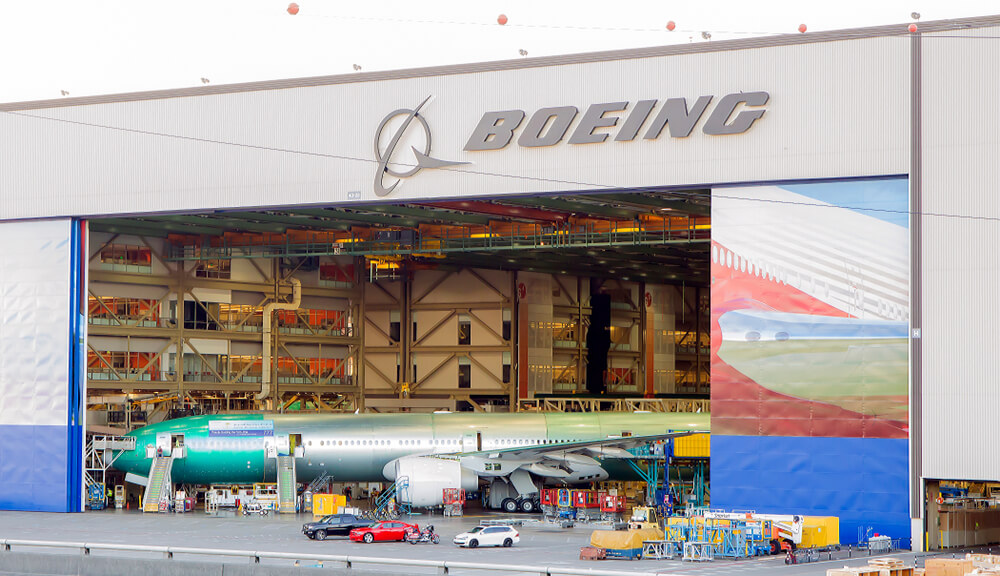Having just emerged from a multi-year crisis with the suspension of one of its most significant market assets, Boeing is entering a new turbulent period, again due to issues in the engineering of its aircraft.
The incident with his 737 MAX 9 on an Alaska Airlines flight last Friday, when part of the fuselage fell off at an altitude of 15,000 feet, was dramatic, but, fortunately, without consequences for passengers and crew.
This was more than enough for the Federal Aviation Administration to order the grounding of all aircraft of this type in the US during the investigation into the cause of the incident and the elimination of deficiencies.
171 MAX 9s have been grounded worldwide. This is the vast majority of 215 aircraft that Boeing has delivered to companies globally so far.
In situations like this, there are expectations that the corresponding government agencies globally will follow the decision of the US regulator. This means that every Boeing 737 MAX 9 could be taken out of service and inspected in the coming days.
Are new groundings coming?
China's aviation regulator has already held an emergency meeting following the incident on the Alaska Airlines flight to discuss possible responses, including grounding MAX 9s owned by the Chinese carriers.
This is quite a possible decision, given that China was the first to ground all 737 MAX after 2 crashes in 2018 and 2019.
There are no Boeing 737 MAX 9s registered in the UK. However, the Civil Aviation Authority (CAA) has asked foreign companies that use them to perform inspections before they enter UK airspace.
Despite the fact that the inspection of each grounded aircraft will last a short time, from 4 to 8 hours, carriers are already suffering traffic disruptions
Despite the fact that, according to the FAA, the inspection of each grounded aircraft will last a short time, from 4 to 8 hours, carriers are already suffering traffic disruptions.
The grounding hit American carriers the hardest. Alaska Airlines pulled all of its 18 MAX 9s from service, which already led to the cancellation of about 160 flights with approximately 23,000 passengers a day after the incident.
United, the largest buyer of this type of aircraft, also voluntarily withdrew a part of its MAX 9 fleet before the incident due to FAA warnings about possible issues with a loose bolt in the rudder control system. After the incident in Portland last Friday, it grounded all 79 aircraft of the type, as requested by the FAA.
Large non-US MAX 9 users, such as Copa Airlines (29 planes of this type) and Aeromexico (19), also grounded their planes.
Will the expectations of the MAX series be met?
The latest incident comes after a long and painful period of a year and a half when Boeing MAXs were grounded due to fatal accidents in Indonesia in 2018 (189 fatalities) and Ethiopia in 2019 (157 fatalities).
The manufacturer is still recovering from the disruption. It was a severe blow to the latest generation of one of the best-selling civil aircraft in history.
Boeing's stock has dropped more than 70% in a long period of grounding of its MAX series, recovering partially in 2023 when it increased close to 40%, but that is still far below the value before the tragedies of 2018 and 2019.
 Boeing has again entered a crisis period where the cause is solely technical issues on the aircraft, not other circumstances
Boeing has again entered a crisis period where the cause is solely technical issues on the aircraft, not other circumstances
Even though the nature of the malfunction on the Alaska Airlines aircraft is not the same as the one that led to the tragedies in Indonesia and Ethiopia, Boeing has again entered a crisis period where the cause is solely technical issues on the aircraft, not other circumstances.
The investigation will determine the final causes of the incident, but the market, customers and passengers already have no doubts that the responsibility lies with the manufacturer.
Boeing has high market expectations for the MAX family. Since 2011, it has received nearly 6,000 orders for various models from this series and has delivered just over 1,300 aircraft to carriers worldwide.
However, their production record is burdened by severe incidents, which threaten a new decline in reputation. It turns out that the company has been facing chronic issues in quality control because all incidents so far have been the result of technical failures.
The Alaska Airlines aircraft, forced to make an emergency landing last Friday, was almost new. It has been in use for less than 2 months.
One of the addresses to which Boeing will have to focus more attention is its subcontractor Spirit AeroSystems from Wichita, which produces the complete fuselage for the 737 models, including the door plug, which fell off on a recent Alaska Airlines flight.